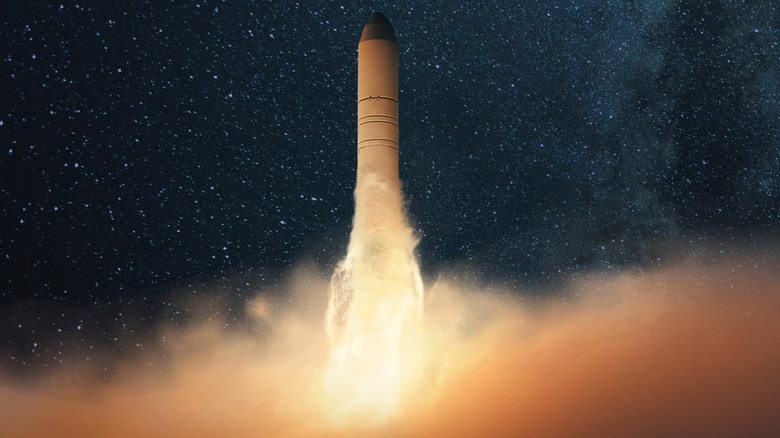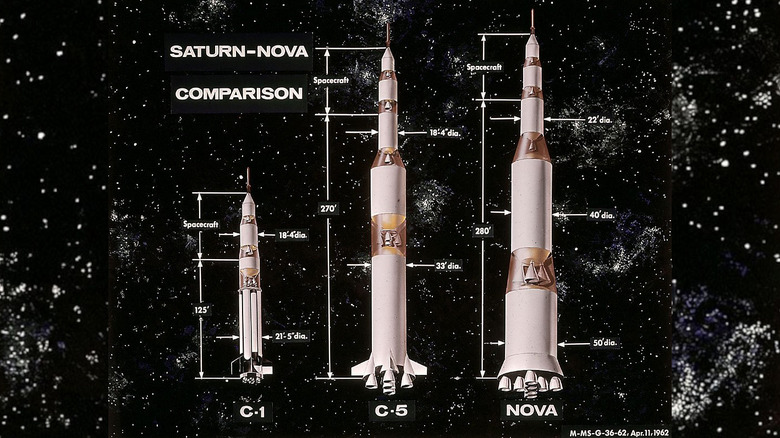This Canceled NASA Rocket Would Have Made The Saturn V Look Like A Firecracker
The Saturn V rocket used by NASA to launch Americans to the Moon in the 1960s and 1970s remained the most powerful rocket ever successfully launched all the way up until 2022, when the Space Launch System (SLS) sent an Orion spacecraft soaring around the moon for the Artemis I mission back in November. For decades, the iconic Saturn V was a symbol of ingenuity, ambition, and national pride. But before it made its debut on the launch pad in 1966, NASA had something entirely different on the drawing board — something bigger.
That was the Nova. While the Saturn V produced 7.5 million pounds of launch thrust (the current SLS generates 8.8 million), the Nova would have taken off with an astounding 12 million pounds of thrust, according to Astronomy Magazine. NASA records note that "Nova was the name used by NASA during 1959-62 to describe a very large booster in the range of 44-88 million newtons (10-20 million pounds of thrust). The rocket never advanced beyond the conceptual stage, as was also true of the Saturn C-2 and C-3."
Such a gigantic rocket would have had some technical obstacles to overcome, not to mention the fact that, because rockets are essentially controlled bombs, if something went wrong, it could potentially wreck the launch pad at Cape Kennedy, PBS reported. Even so, there was a period of time where the Nova rocket seemed a certainty.
History had other plans
When the Apollo program was still in its infancy and a successful crewed moon landing was anything but assured, there was a sentiment shared by many at NASA that the mission profile should be kept as simple as possible. Getting humans safely to the Moon's surface would be a difficult task. Getting them back home again, however, seemed impossible. There wasn't any infrastructure on the Moon: no launch pads, no refueling stations, and no rockets. The key to success would be eliminating all unnecessary complications.
The Nova rocket was an ideal solution. The reason for its gargantuan size and power was its intended use in what was called the "direct ascent" plan for a lunar landing. This was the most straightforward of the proposed mission plans, favored by NASA officials early on. Using the Nova, the mission would fly a single rocket directly to the Moon, land on the surface, and then reuse it to launch from the Moon back to Earth without the need for going into orbit. Many iteration were considered, and the most notable proposal included a "five-stage vehicle using eight F-1 engines in the first stage," according to NASA records.
As time went on, it became clear that such an enormous rocket would be too costly and wouldn't be capable of achieving then-President John F. Kennedy's goal of getting boots on the moon before 1970. In 1962, NASA decided to proceed instead with the smaller Saturn V rocket, on which astronauts would to perform an orbital docking procedure a quarter-million miles from Earth before they could return home. Even so, NASA still manages to hold the biggest-rocket record ever since, though that may be about to change courtesy of SpaceX.

